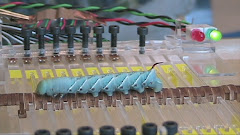Recent years, the bio-inspired robotic community became very interested in the idea of embedding control strategies into the structures or morphology of the robots. In a fast ballistic locomotion, many animals have some structural designs which allow them to tolerate certain degree of perturbation. This control method has been named "pre-flex" as oppose to neural "re-flex". The phenomenon is well represented by the example of cockroach recovering from lateral perturbation. Sprawl biomimetic hexapod robot nicely demonstrated this damping effect in polypedal running locomotion. In a way, the morphology effectively reduces the computation required to control balance and recovery. Thus some people like to call this effect: "morphological computation".
The power of "morphological computation" relies on the structure's ability to response "differently" to varying conditions. A linear transform is hardly any good because its result only depends on one order of the input. For example, an Hookean spring produces certain tension at certain stretch regardless of how fast it is stretched. Therefore most interesting logic components are non-linear. As the results, the input can be processed conditionally, taking more things into account.
Now, what exactly can be computed in morphology and what parameters are critical? That's a fundamental question for the field of functional morphology and biomechanics. I think I might have found my version of the answer in my robots. Let me get back to this topic in a few weeks after consulting with some caterpillars.
Subscribe to:
Post Comments (Atom)

.jpg)
No comments:
Post a Comment